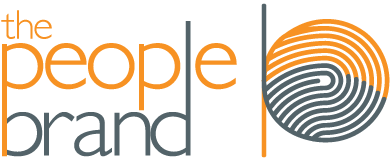 DUST!N
DUST!N
So, we’re segueing into your book, Warriors, Workers, Whiners & Weasels and you have an accompanying blog with that, which is blog.warriorsandweasels.com. Can you tell me a little bit about the book?
Tim
Well, it’s a management philosophy that I’ve been working with for some time and thought I’d put it down on paper. Basically, what I’ve found over the years is that I’d classify people into those four categories and it became an easy lexicon so that you didn’t have to explain things. You’d be working with your managers and say, “Oh, we’ve got a whiner here.” and everyone would know what that was. It became a time-saving classification system.
In the book I break down into those four categories. I offer hints as to how you deal with people, because there’s a lot of people on the cusp. They’re making that career decision that they’re going to be a worker or a warrior… or they’re going to go down into whiner territory and stay there for the rest of their lives.
So the book is written from two perspectives:
The manager’s perspective to say, “OK, this is a helpful way to help me classify people with some hints of how to manage them.”
From the personal perspective to say, “Wow! Am I acting like this sometimes?” As I was writing the book I thought I’ve exhibited all these traits myself at one time or another. I found it helpful to look at a decision I have to make and go, “Boy, if I make this decision… bottom line is I’m being a weasel. Am I comfortable with that?” or I’m whining here.
DUST!N
You’ve got a lot of experience starting up a lot of different companies throughout the years. Is this something you’ve just distilled from your experience of all the different companies you’ve worked with?
Tim
Absolutely. Not only starting my own companies, but I might work with 40 or 50 clients in a year. We’re a project-based agency and I’ve been in this business now 20 years doing this kind of work. And there’s a lot of businesses where you get to see a lot of clients… but it’s pretty interesting. Not only in how I manage my own staff and my own personal life, but when you work with all these companies, you see a lot of dysfunction. I can look at my clients, and you see enormously successful companies and you say, “Wow! That guy’s a warrior. I can see why they’re successful.” Sort of the personality of the organizations. The concept seemed very extendible across the board.
So, around the office, now we can communicate really quickly.
“How’s the new client?”
“Well, the head guy’s a real warrior, but we’ve got a whole level of weasels in this department. It’s going to make our life very difficult.”
You have to figure out how to help make those organizations be successful when they have the wrong people in the wrong positions.
DUST!N
There are some different books out there and resources that use some similar concepts. Even some people using allegories to get the point across. Like, if you took the DISC model for personality types, you might say someone was a high D or S… or a DSC.
For me, it’s kind of hard to apply that in the scenarios you’re talking about applying it across different contacts in the organization. So, do you see your 4 W’s as something people can apply pretty readily and easily to their clients and within their own organization?
Tim
Well, I think so. I think it’s real common sense. And stringing together four attributes that people think of anyway, it doesn’t make me brilliant. The book to a certain extent is about how you proceed up or down that scale and the steps you take to get there.
Also, with a full acknowledgment that you’re going to deal with all four classifications… a lot. The problem is, when you get weasels in an organizations… they don’t do things for… it’s a real minority of people luckily, but there are people in life that do things for no apparent reason. It’s a very ego-intensive, evil way to deal with things. I’d rather deal with someone who’s incompetent, because I can deal with that.
DUST!N
(laughs) So, who would you say this is written for? Who’s the audience for this book?
Tim
Hopefully we’ll find two audiences… (Read More “Interview with a Warrior – Tim O’Leary Pt. 2)
